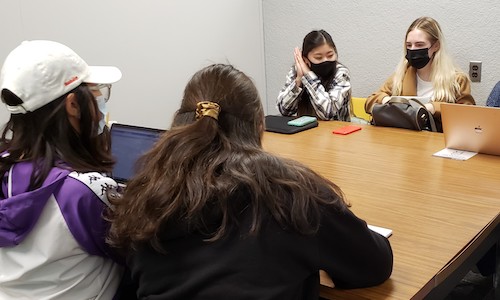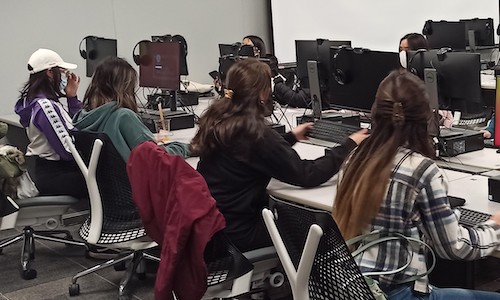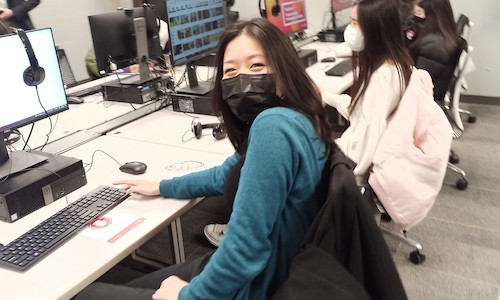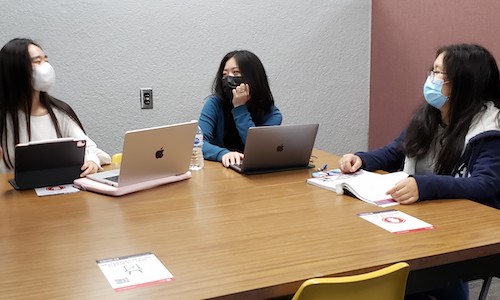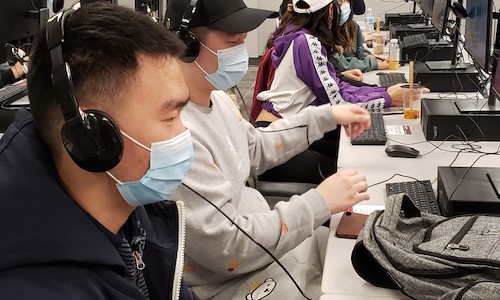Want to take advantage of the open-access space at the MLC? Drop in and study with other students. Our computers are here to help you learn language in unique ways, at your own pace, with software that supports language learning through concordance, audio and video recording, variable rule analysis, writing exercises and more.
If you want to study with others, the MLC has space for groups too! Simply submit a booking request ahead of your next visit and we will reserve your spot if one of our group rooms is available on the requested time and date.
Note: The open-access space in South Ross 117 is currently closed.

Questions?
For more information about our group study and drop-in spaces, feel free to connect with us at lapsmlc@yorku.ca.

